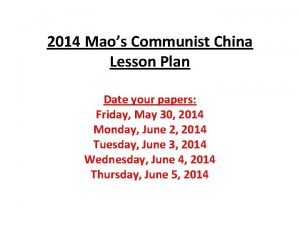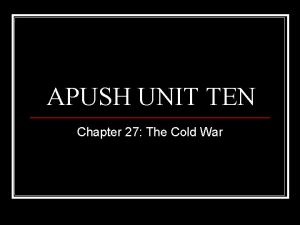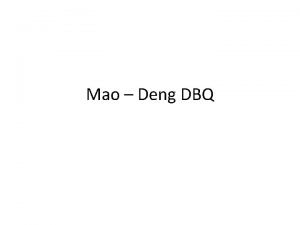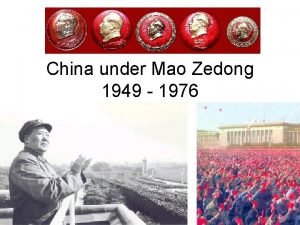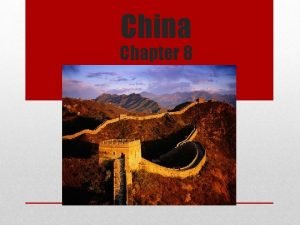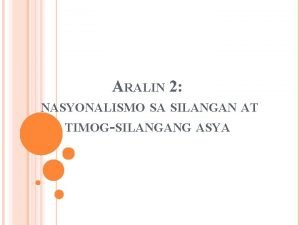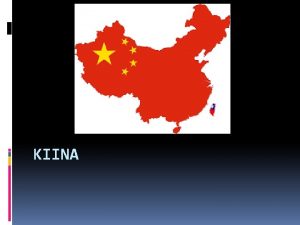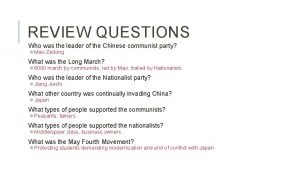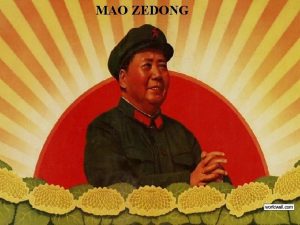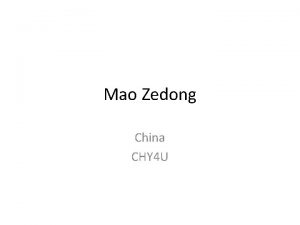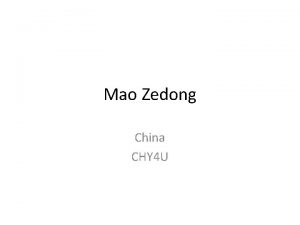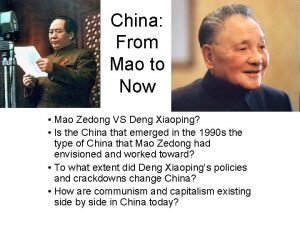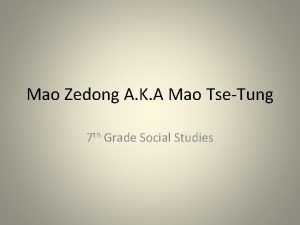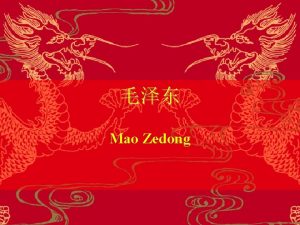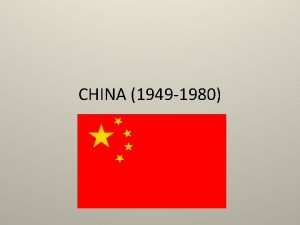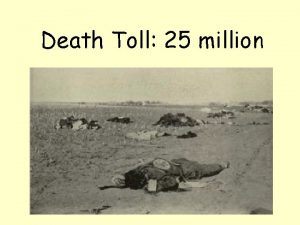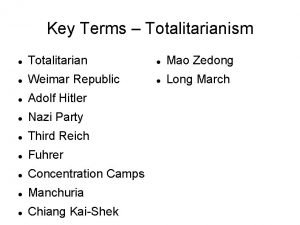MAO ZEDONG Mao Zedong was the leader of














- Slides: 14

MAO ZEDONG

• Mao Zedong was the leader of China’s Communist Party. • He convinced China’s peasants to overthrow their weak government and install Mao as “Chairman” • He encouraged the killing of all “capitalists” in his country. • Capitalism is the enemy of Communism. • Mao killed millions of people when he created his communist “utopia”.


• Communism is designed to be a “permanent revolution”. • For this reason, communists are always in a state of war. • Communism is very strict and not very peaceful.

• Propaganda spread Mao’s message throughout China, brainwashing the public. • Propaganda is the advertising of political points of view. Propaganda is generally untrue. • Both Russia and China used propaganda to make the United States And its economic system seem evil.

• In the 1960 s, Mao begins his “Cultural Revolution”. • Millions of people die when angry brainwashed mobs tear the country apart. • Mao’s Little Red Book becomes the most widely read in China.

9 -9 -1976: Mao Dies • On his death, Mao brags that he had “burned more books than any emperor. ” • After Mao’s death, his friends were charged with Numerous political crimes.

• After Mao died, Deng Xioaping took control of China. • He understood that Mao’s Cultural Revolution was a failure. • Deng encouraged business owners to begin trading with foreign countries. • Capitalism began to take hold in China. • Deng was named Time’s Man of the Year. DENG XIOAPING

China today • New leader is Jiang Zemin • China is beginning to embrace capitalism • We want to be China’s friend, but we don’t like the way they treat people.

CHAPTER 33, Section 2: Communists Triumph in China TODAY’s OBJECTIVES: • Analyze the Civil War between the Nationalists and the Communists in China. • Explain how China split into two nations. • Describe how Mao’s Marxist regime transformed China Daily Journal: Answer the following questions: (1) Who was Mao Zedong? (2) When did the civil war in China resume? (3) What advantages did Nationalist forces have?

CH 33: Section 2 – “Civil War in China” 1. Who was Mao Zedong? Leader of the Communists. Who was Jiang Jieshi (Chiang Kai-shek)? Leader of the Nationalists. Jiang Jieshi 2. When did the civil war in China resume? At end of World War II in 1945. When would the civil war end? 1949. 3. What advantages did Nationalist forces have? A large national army that had U. S. aid. What advantages did Communist forces have? An army skilled in guerilla warfare that had the popular support. Mao Zedong

CH 33: Section 2 – “Civil War in China” “In 1949, Mao Zedong and his Communists had gained control of the country. He proclaimed it to be the new People’s Republic of China. Jiang and other Nationalist leaders retreated to the island of Taiwan and proclaimed themselves to be Nationalist China. ” ~ textbook 4. Where is Nationalist China located? On the island of Taiwan. Where is the People’s Republic of China located? On mainland China. 5. How did the superpowers react to the existence of two Chinas? The U. S. helped Nationalists set up a democratic government and enlarged America’s sphere of influence in Asia. The Soviets provided Communist China financial, military, and technical aid. T. Loessin / Akins High School

CH 33: Section 2 – “Civil War in China” “Many in the United States viewed the Communist takeover of China as proof of a Communist campaign to conquer the world. Such Americans also believed this further justified the official U. S. policy of containment. ” ~ textbook p. 863 5. How did the superpowers react to the existence of two Chinas? - The U. S. helped Nationalists set up a democratic government and enlarged America’s sphere of influence in Asia. - The Soviets provided Communist China financial, military, and technical aid. How did Mao transform the economy of China? Mao transformed China’s economy by giving land to peasants, and then copied Stalin’s policies in the USSR - forming collective farms and nationalizing all the industries. T. Loessin / Akins High School

CH 33: Section 2 – “Civil War in China” “The Communists claimed to have a new ‘Mandate from Heaven’ and aimed to restore China to a powerful nation of 550 million people. ” ~ textbook 6. Why did Mao’s “Great Leap Forward” program fail? Poor planning, inefficient industries, lack of work incentive, crop failures and famine. Why did Mao launch the Cultural Revolution? Hoping to revive the Marxist revolution he had begun. B. To extend the economic success of the five-year plan to agriculture as well, Marx created large communes where the Chinese peasants lived in strictly controlled communities. In response to Mao’s call to revive the Marxist revolution (which dreamed of a society where peasants and workers were equal and intellectuals were considered dangerous) Chinese students formed militia units called Red Guards who targeted and reported on citizens they considered “dangerous” to the Communist ideology. T. Loessin / Akins High School
 Mao zedong lesson plan
Mao zedong lesson plan Dien bien phu apush
Dien bien phu apush Mao zedong vs deng xiaoping
Mao zedong vs deng xiaoping Mao zedong outline
Mao zedong outline Sun yat sen and mao zedong
Sun yat sen and mao zedong Nasyonalismo ng silangang asya
Nasyonalismo ng silangang asya Mao zedong kuolema
Mao zedong kuolema Mao mao
Mao mao Transactional leadership and transformational leadership
Transactional leadership and transformational leadership Tư thế ngồi viết
Tư thế ngồi viết Hình ảnh bộ gõ cơ thể búng tay
Hình ảnh bộ gõ cơ thể búng tay đặc điểm cơ thể của người tối cổ
đặc điểm cơ thể của người tối cổ Cái miệng nó xinh thế chỉ nói điều hay thôi
Cái miệng nó xinh thế chỉ nói điều hay thôi Mật thư tọa độ 5x5
Mật thư tọa độ 5x5 ưu thế lai là gì
ưu thế lai là gì
